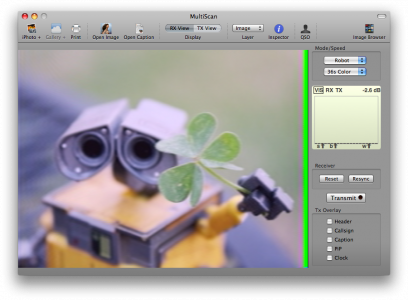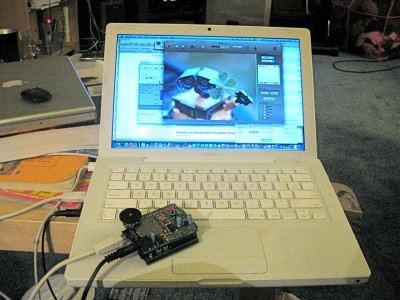Success: Robot36 encoder works…
Well, it works! Using the information in the paper I linked earlier in the day, I spent some time and managed to code up a Robot36 SSTV encoder. Above, you see the image decoded by Multiscan on my Macbook. Here’s a link to the .wav file:
<a href='https://brainwagon.org/wp-content/uploads/2009/07/robot36-wally.wav">A Robot36 encoded SSTV picture
The image I used above is just one of my favorites, but I didn’t take it. It came from ladybugbkt on Flickr. Please make sure that it is only used for Non-commercial uses and with the proper attribution.
Addendum: Some time ago, I noted that I was having difficulty with the Audio Shield that I built as an audio output for my Arduino. Yesterday, I finally got around to sorting out the (as it turns out) software issue, and it began to play back .wav files from an SD card. So, I took the WAV file I generated, put it on the card, and then used the Arduino to play back the file into my Macbook. You can see it decoding in the video below. The timing of the Arduino is apparently not that close, because the image has a pretty strong skew, but not beyond which Multiscan can automatically correct. I’ll perhaps figure out how to do better with this later.
httpv://www.youtube.com/watch?v=VMULetCtRVc
Addendum2: Oddly enough, one year ago today I linked to DJ1YFK’s webpage, where he has a Martin 1 SSTV encoder. Which reminds me, i forgot to put a link to my code. It’s ugly and inefficient, and I can think of a couple of things that are probably wrong with it, but it works. Check it out here.
Addendum3: Link above was broken, so I uploaded it to github’s “gist” service.

